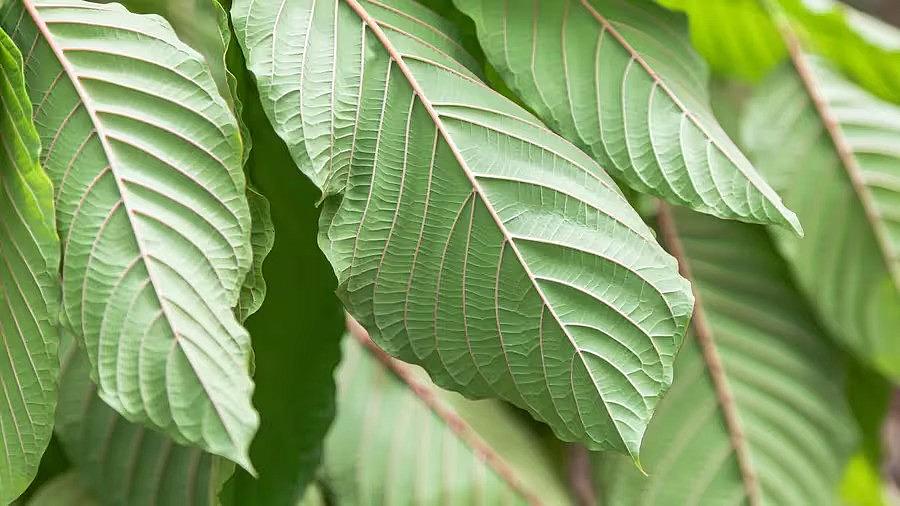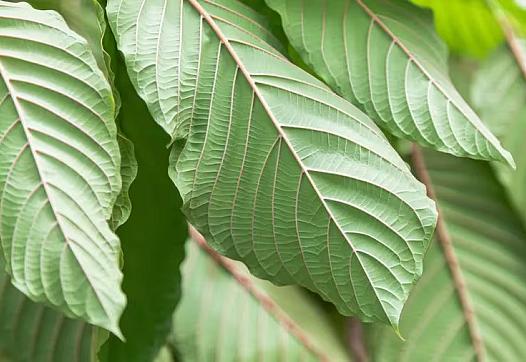How the Tampa Bay Times investigated the kratom industry
The story was originally published in Tampa Bay Times with support from our 2023 Data Fellowship.

A Times investigation found more than 580 fatal kratom-related overdoses in Florida.
IRENE BARLIAN | Special to the Times
Helen Freund had been covering the Tampa Bay region’s dining and restaurant culture for about three years when she began to notice the increasing popularity of kratom, a psychoactive herb from a Southeast Asian tree. In March 2022, she decided to take a deeper look.
Freund interviewed people in the kratom industry and those who use the plant, while continuing to write about the area’s dining scene. She quickly found that the substance, often described as being as innocuous as coffee, was far more complex.
She learned that kratom was mostly unregulated, despite concerns about its safety. She also began to explore why people were turning to it. Kratom wasn’t just being used in social settings. People were self-medicating for ailments like chronic pain and opioid addiction.
Freund began probing reports of overdose deaths, and it became clear this was a story the Tampa Bay Times needed to pursue. Freund was joined later in 2022 by health reporter Sam Ogozalek and politics reporter Kirby Wilson, and this year by investigative reporter Hannah Critchfield and data editor Langston Taylor. Reporters filed more than 300 public records requests with police and fire departments, state and federal agencies and medical examiner offices across Florida. They interviewed over 150 scientists, doctors, policy experts, regulators, industry players, consumers and relatives of overdose victims. Freund, Ogozalek, Critchfield and Wilson have worked full-time on kratom stories for six months.
How did the Times count kratom-related overdose deaths?
The Times requested Florida autopsy reports citing kratom or one of its major chemical compounds, an alkaloid called mitragynine, as a cause of death or contributing factor dating back to 2010.
No news organization has ever done this on a large scale. The requests initially turned up more than 600 cases. Reporters handbuilt a database to track the overdoses and key details about them, including blood-mitragynine concentrations, contributing medical conditions and every substance flagged in a person’s system during toxicology testing.
The Times limited its analysis to deaths that occurred on or before June 30, 2022.
Reporters analyzed accidental overdoses and excluded cases where the manner of death was suicide, undetermined or unavailable. They also excluded cases that only listed a “probable cause of death.”
Reporters left several cases out of their final count of kratom-only overdoses because of issues with toxicology testing.
That left 587 kratom-related overdoses, 46 of which were determined to be caused by the herb alone. The earliest was recorded in 2013.
Cases were often attributed to mitragynine “toxicity” or “intoxication.” Labs test for mitragynine because it’s the best-studied alkaloid in kratom. Blood-mitragynine concentrations may decline between a person’s death and the testing date. They may also include similar alkaloids from the plant.
The Times classified a death as a kratom-only overdose if mitragynine or kratom was the only substance listed as a cause of death or contributing factor. (In many of these cases, tests found drugs in victims’ blood, such as low levels of prescription medications, but medical examiners didn’t blame them for the overdoses.) One death in the Times’ database was attributed to mitragynine and 7-hydroxymitragynine toxicity. Reporters considered this to be a kratom-only overdose because mitragynine and 7-hydroxymitragynine are both kratom alkaloids.
Fourteen of these cases involved people who had at least one medical problem, such as heart disease, listed as a contributing factor.
The Times checked its methodology with four kratom and pathology experts.
How did the Times review medical examiners’ decisions?
Forensic pathologists use a process of elimination to determine how people died in suspected overdoses. They often check hearts and lungs, rule out easily-identifiable diseases and request toxicology testing.
When someone has multiple substances in their blood, medical examiners look at the concentrations of each, considering whether they are high or low. They also assess if the substances, when combined, could be deadly.
Scientists haven’t yet agreed on a fatal dosage for kratom, making this process more difficult.
The Times asked two forensic pathologists outside of Florida and two kratom experts to review its autopsy and toxicology findings. There was some disagreement about cases with lower blood-mitragynine concentrations and people who had significant medical conditions.
But the pathologists acknowledged that having different opinions is normal in a field that often comes down to subjective interpretations. One of them, Gregory J. Davis, a widely-respected expert at the University of Kentucky, said he understood the logic medical examiners followed and called their decisions sound.
The kratom researchers also said the Times’ findings overall made sense. Higher blood-mitragynine concentrations were often found in people who overdosed solely on kratom.
C. McClain “Mac” Haddow, the chief lobbyist for the American Kratom Association, called the Florida death toll “grossly overstated.”
Reporters also reviewed Florida Department of Law Enforcement data on hundreds of cases where mitragynine was present but not listed as a cause of death.
How did the Times consider multi-substance overdose risk?
There are no rules, either in Florida or at the federal level, requiring that kratom companies alert people to the potential risk of mixing the herb with other substances. The Times sought to understand the possible danger and consulted two pharmacology experts.
Research has shown that kratom can slow major drug-metabolizing enzymes, cytochrome P450 2D6 and 3A4, as the body works to flush the herb’s alkaloids out of its system. The enzymes break down thousands of substances (scientists call these “substrates”) ranging from common prescription medications to illicit drugs.
A comprehensive list of these substrates is Indiana University’s Flockhart Table. The Times used the table as a reference for identifying substances that could be problematic when mixed with kratom. No other newsroom has done such an analysis.
Reporters cataloged every substance that was present in overdose victims’ toxicology reports, then ran a data analysis to match them with the substrates in the Flockhart Table.
They found that nine in 10 people died with a substance in their system that could be harmful when combined with kratom.
The Times did not exclude any substances during its analysis because of the uncertainty around whether even substrates like caffeine could result in dangerous interactions. (Reporters found that one kratom product, K Shot Black, warns consumers not to mix its concentrated extracts with large amounts of caffeine.)
Two experts reviewed and validated the Times’ methodology.
How did the Times test kratom products?
The Times purchased 20 kratom products from online vendors and gas stations, smoke shops and other businesses around Tampa Bay, then brought them to the University of Florida for testing.
Scientists quantified up to 13 alkaloids in the products: mitragynine, speciogynine, speciociliatine, mitraciliatine, 7-hydroxymitragynine, corynantheidine, paynantheine, isopaynantheine, corynoxine, corynoxine B, isospeciofoline, ajmalicine and mitraphylline.
The method the researchers used is called ultra-performance liquid chromatography-tandem mass spectrometry. It’s the gold standard for this type of analysis, said Abhisheak Sharma, one of the scientists studying kratom at the university.
Kratom brands often don’t disclose their products’ alkaloid levels on package labels, or they only list the amounts of mitragynine and 7-hydroxymitragynine. The Times wanted to test for those and other alkaloids because scientists say they could affect the safety of products.
The testing at the University of Florida cost the Times $3,600. It was made possible through participation in the USC Annenberg Center for Health Journalism’s 2023 National Fellowship.
How did the Times analyze kratom legislation?
To understand how the American Kratom Association is pushing changes to kratom laws across the country, the Times analyzed bills filed in 34 states, tallying regulatory provisions in the legislation. A 35th state, Connecticut, was excluded because its bill wasn’t filed with detailed enough language to analyze. The Times used LegiScan, an online bill tracking service, to find the legislation in various states.
In many states, the association-backed bills have been filed more than once, sometimes changing substantially over the years. The legislation sometimes saw amendments that did not have the support of those initially backing it.
Because of the inconsistencies, the Times set a baseline by only reviewing bills as they were originally filed. In cases where a bill was filed during multiple legislative sessions, the Times looked at the version that was most recently introduced.
There was one exception to this rule. In states where the association’s legislation has become law, the Times analyzed the initially filed versions of the bills that are now statute. Lawmakers in Colorado, Georgia and Nevada all passed association-backed legislation. Then, in subsequent years, the association backed additional changes to the laws. None of these measures became law, and they were not included in the analysis.
Reporters sent the breakdown to eight experts in pharmacology, toxicology and kratom, asking them to evaluate the bills when it comes to protecting consumers from unsafe products.
Of the experts the Times consulted, Walter Prozialeck, a professor of pharmacology at Midwestern University, was the most supportive of the association’s bills. But he said some of the bills lacked meaningful enforcement measures.
The other experts the Times consulted were Alan Kaye, Oliver Grundmann, C. Michael White, Bruce Goldberger, Cornel Stanciu, Abhisheak Sharma and Paula Brown.
Haddow, the American Kratom Association’s chief lobbyist, said the organization’s legislation is based on scientific studies, not the opinions of individual experts.
How did the Times piece together the kratom supply chain?
The Times traced how kratom travels from Southeast Asia through U.S. borders and ends up for sale inside gas stations and smoke shops across Florida.
The vast majority of kratom in the U.S. comes from Indonesia. The Times applied for a journalist visa through the Indonesian government to travel to Pontianak and Kapuas Hulu in West Kalimantan to talk with kratom suppliers, tour manufacturing facilities and visit the villages and farms where kratom crops are cultivated.
The visa was denied without explanation. Kratom remains a sensitive topic in Indonesia. While it is legal to grow and export, the future of the crop remains uncertain.
Reporters pivoted and interviewed sources in Indonesia by Zoom with the help of a translator. The Times also hired a Jakarta-based freelance photographer, who captured images from farming operations in the Kapuas Hulu region and packaging facilities in Pontianak.
Reporters used U.S. customs data from ImportGenius to examine kratom imports into the country since 2006. They compared it to FDA refusals data showing blocked imports.
The unregulated state of the industry made tracking the manufacturing of kratom products in the U.S. challenging. Some of the biggest kratom brands operate through a network of companies that obscure their ownership structure and the path of kratom through the production process.
The Times chose to focus on one of the country’s most popular kratom brands: Optimized Plant Mediated Solutions, known as O.P.M.S., which has been linked to at least five kratom-related overdose deaths in Florida.
Reporters used U.S. Occupational Safety and Health Administration complaints, state permits and inspection reports, emergency response calls, fire and police reports, federal environmental records, customs data, business and court filings, medical examiner reports, internal company documents and photos and videos from workers. Reporters traveled to Colorado, Georgia and Oregon and interviewed nearly two dozen current and former employees.
Through interviews and records the Times was able to produce a first-of-its-kind examination showing the typical path that kratom can take from the time it is picked until it is sold.
How much did this series cost to produce?
Five reporters, four photographers, a video journalist and several editors, designers and engagement producers have worked on this project. The Times estimates it cost the newspaper at least $400,000 — mostly in staff time and salaries. This also includes product testing and travel in Indonesia, Colorado, Oregon and Georgia.

